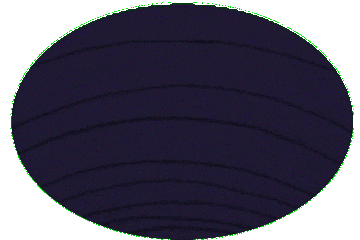New Orleans
New Orleans (commonly known as NOLA or The Big Easy among other nicknames) is a consolidated city-parish located along the Mississippi River in the U.S. state of Louisiana. With a population of 383,997 at the 2020 census, New Orleans is the most populous city in Louisiana, the second-most populous in the Deep South after Atlanta, and the twelfth-most populous in the Southeastern United States; the New Orleans metropolitan area, with about 1 million residents, is the 59th-most populous metropolitan area in the United States. New Orleans serves as a major port and commercial hub for the broader Gulf Coast region. The city is coextensive with Orleans Parish. New Orleans is renowned for its distinctive music, Creole cuisine, unique dialects, and its annual celebrations and festivals, most notably Mardi Gras. The historic heart of the city is the French Quarter, known for its French and Spanish Creole architecture and vibrant nightlife along Bourbon Street. The city has been described as the "most interesting" in the United States, owing in large part to its cross-cultural and multilingual heritage. Additionally, New Orleans has increasingly been known as "Hollywood South" due to its prominent role in the film industry and in pop culture. Founded in 1718 by French colonists, New Orleans was once the territorial capital of French Louisiana before becoming part of the United States in the Louisiana Purchase of 1803. New Orleans in 1840 was the third most populous city in the United States, and it was the largest city in the American South from the Antebellum era until after World War II. The city has historically been very vulnerable to flooding, due to its high rainfall, low-lying elevation, poor natural drainage, and proximity to multiple bodies of water. State and federal authorities have installed a complex system of levees and drainage pumps in an effort to protect the city. New Orleans was severely affected by Hurricane Katrina in late August 2005, which flooded more than 80% of the city, killed more than 1,800 people, and displaced thousands of residents, causing a population decline of over 50%. Since Katrina, major redevelopment efforts have led to a rebound in the city's population. Concerns have been expressed about gentrification and consequent displacement. Rates of violent crime in New Orleans remain higher than those in most other U.S. cities, but by mid-2025 a prolonged focus on addressing its root causes and reforming the local criminal justice system have reduced the incidence of violent crime to its lowest levels since the early 1970s.
This article uses material from the Wikipedia article "New Orleans", which is released under the Creative Commons Attribution-Share-Alike License 3.0.
References
| Title | Summary | |
|---|---|---|
| Amarillo Repertory Dance Company | ... One of the pieces performed, "New Orleans ," was set to ... | |











![Turkey and the Wolf: Flavor Trippin' in New Orleans [A Cookbook], Hereford, Maso Turkey and the Wolf: Flavor Trippin' in New Orleans [A Cookbook], Hereford, Maso](https://i.ebayimg.com/images/g/VqQAAOSwOUxhXshx/s-l225.jpg)
